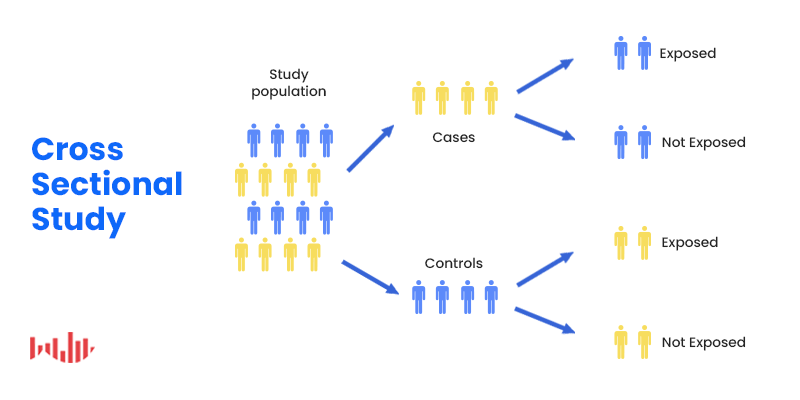The 3 Major Types of Survey Research Methods

Within the ever-evolving and accelerating market research space, there is a litany of surveys making the rounds. Businesses are scrapping to get all the necessary consumer insights into their hands, and this is a fitting approach to satisfy any target market.
That’s because surveys allow you to gain an edge within your niche and outperform your competitors. While nothing is guaranteed, researchers and marketers have long been turning to surveys to observe the minds of their customers and potential customers.
Before perusing through the aforementioned litany of surveys, you ought to know about the different types of survey methods. That’s because there’s no “one size fits all” approach when it comes to survey research.
Business needs vary, as do their industries, customers and campaigns. Let’s navigate the three most salient types of survey methods.
Survey Research — Beyond Distribution Type
In survey research, there are four types of distribution methods — but we won’t be covering those too much in depth. That is because they are widely known and seen. It’s virtually impossible for you or your business to not have heard of them in a limited capacity at the very least.
However, for the purpose of organizing the in-depth survey methods we discuss later into the deployment types, we’ll briefly mention them here. The four different types of survey deployment methods are:
- Paper surveys
- Written questionnaires
- Mail-in surveys
- Newspaper surveys
- Online surveys
- Online forms
- Proprietary surveys (on brand sites)
- Email surveys
- In-app surveys
- Third-party surveys
- Telephonic surveys
- Cold calling
- Anonymous respondents
- One-on-one interviews
- In-person and onsite interviews
- Less anonymity
All of these survey deployment types can serve both qualitative and quantitative research needs. The ones you choose to incorporate into your market research campaigns is ultimately up to the needs of your business. Some businesses prioritize ease, some prefer quick insights while others prefer cost-savings.
Now that you know survey distribution types, less delve further into specific survey methods.
Cross-Sectional Survey Studies

Cross-sectional surveys concentrate on a very specific point in time and exist as a quick overview of a small population sample. This method is ideal for situations wherein quick answers are needed to gain knowledge on standalone, or single situations.
This survey method is based on three conditions:
- the distribution of surveys to small samples
- within large populations and
- conducted over a small period of time.
The sample pool is drawn from specific variables, usually, only a few to narrow down a unique and usually small population. The findings are recorded within a short period of time and are studied and archived within that one specific point.
The variables are not manipulated as this type of research method is for observations only. This approach cannot measure causation between certain occurrences (ex. Inactivity and weight); rather, it measures the correlation between occurrences.
Longitudinal Surveys
The antithesis of cross-sectional surveys, longitudinal surveys study variables over a longer period of time. This can be anywhere between weeks and on the far end of the spectrum, decades.
As such, they require more input in terms of several aspects, including participants, time and money. In this regard, a larger pool of participants is used and studied for much longer.
Similar to cross-sectional research, this method is also observational and studies the exact sample pool for the duration of the study.
Longitudinal surveys come in three main sorts:
Trend surveys:
- Study trends
- Observe how participants’ tendencies change over time
- Ask the same questions at different points in time
- Don’t necessarily study the exact same participants throughout, since the focus is on trends
Panel surveys:
- Focus more on people than trends
- The same participants are studied throughout the duration of the study
- Tend to be more expensive and difficult (tracking & keeping up with the same people for years on end)
Cohort surveys:
- Regularly study a group of participants that fall under a specific category
- Don’t require the same participants to take part every year
- Examples include those born within the same decade, workers of the same industry at the same time, other common life experiences
All three of these kinds of surveys help researchers study how people change and, as longitudinal research, they are also part of correlational research. Longitudinal surveys help businesses and researchers scrutinize developments and changes.
They allow researchers to assess whether the changes are due to age, life factors or trends.
Retrospective Surveys
This survey method is yet another type based on frequency. It combines aspects of both cross-sectional and longitudinal survey methods.
Retrospective surveys observe changes that occur over a longer period of time, much like longitudinal surveys. However, like cross-sectional surveys, they are facilitated just once. As such, responders discuss happenings from the past. These include feelings, attitudes, experiences and beliefs.
The findings are thereby longitudinal in nature, but performed in a cross-sectional fashion, ie, without requiring the long amounts of time to collect the data, like in traditionally longitudinal studies.
This scaling back on timing and monetary savings are the major advantages of this type of survey method. However, it does have its fair share of drawbacks, mainly those of memory distortion. For example, memories from the recent past may be vivid or clear enough to provide researchers with accuracy.
But memories of the more remote past, or even those of both the recent and distant past, when compared against one another, may lead to inaccurate answers.
Settling on the Correct Survey Method

Before you conduct any survey research, there are several questions you can stand to ask yourself or your own business. These should help you narrow down the proper survey method and distribution channel for your survey research.
Here are some questions to consider which method is most suitable for you:
- Do you need to gather long-term, continuous research or are you looking to gain insights on the current timeframe?
- This will help you decide between choosing a cross-sectional or longitudinal survey study.
- If you prefer a long-term study, are you willing to persist in obtaining responses from your sample pool, or do you want to pursue different respondents each time?
- Would you prefer to survey the same group of respondents in the long term?
- How often do you need survey responders to take part in your survey research campaign?
- Are you looking to understand the development of people’s behaviors or trends within your industry?
- If you don’t need to conduct a survey across a large span of time, do you need to question respondents about the past?
- Do you need to study a specific category of participants, or can they fall within a more broad category?
As a business, you should cross-reference your responses to these questions with the information above. That way, you can make an educated decision about which survey method and (survey types) are best for your business.
Frequently asked questions
What are the four methods of survey distribution?
The four survey deployment methods are paper surveys, online surveys, telephonic surveys, and surveys conducted via in-person interviews.
Why are cross-sectional surveys conducted?
Cross-sectional surveys are used to quickly get answers about a specific scenario at a certain point in time. They focus on a small sample size to provide a general overview of a specific scenario or situation.
What is a longitudinal survey?
A longitudinal survey studies a pool of participants over a set period of time. The period of time can range from weeks to many years. It is performed to understand how the respondents change or develop over time.
What are the three types of longitudinal surveys?
The three types of longitudinal surveys are trend surveys, panel surveys, and cohort surveys.
How is a retrospective survey different from a longitudinal survey?
Retrospective surveys are performed to observe changes that occur over time, but they are conducted only one time. The survey is performed to understand how the respondents feel or react to something that happened in the past.
Pollfish Marketing Team
Ready to Try Pollfish?
Create your survey with AI, target high-quality respondents starting at $0.95 per complete, and start getting results in just minutes in real-time. From running a simple product concept survey to managing a constant stream of trackers for dozens of clients in dozens of countries, we’ve got you.
